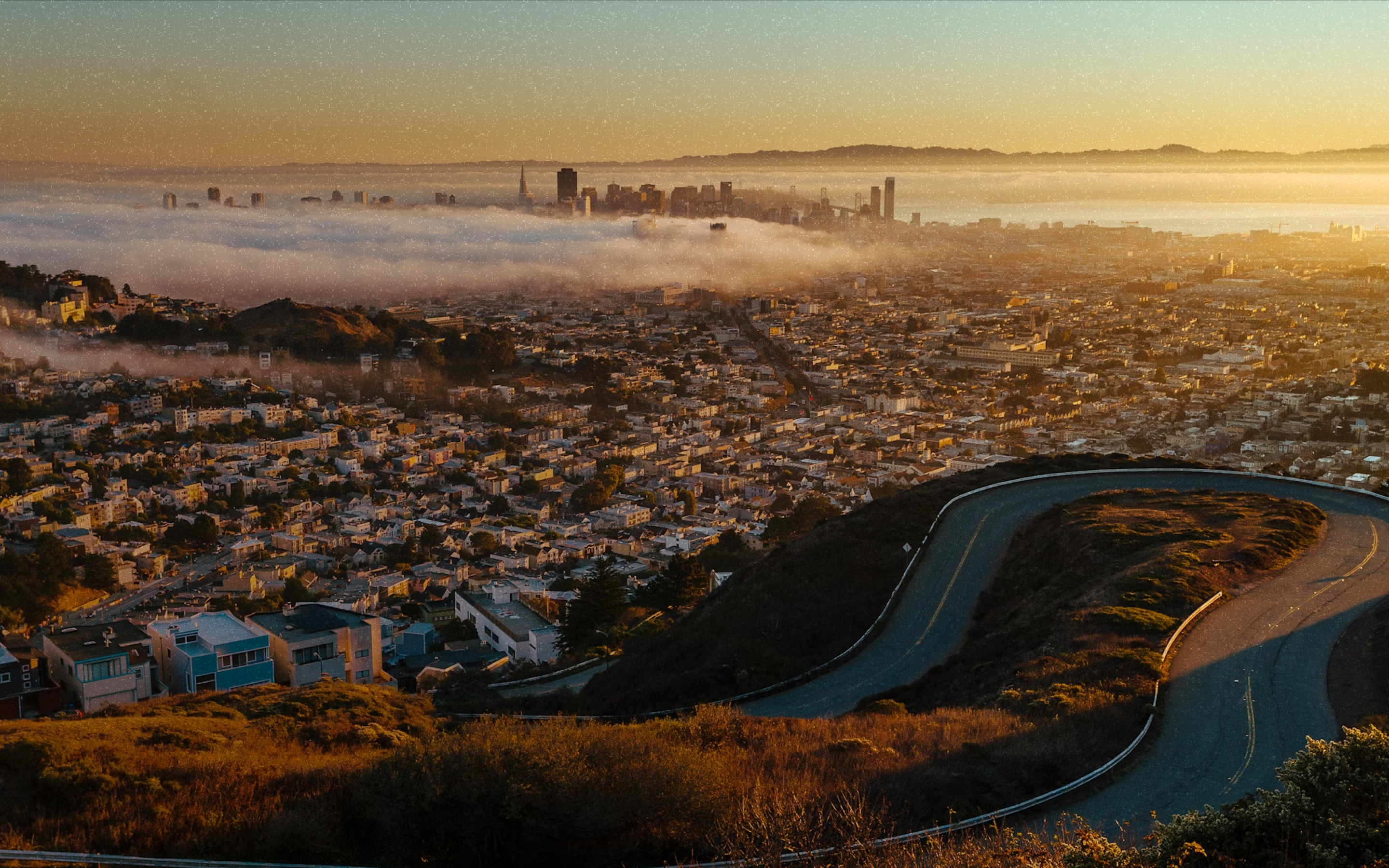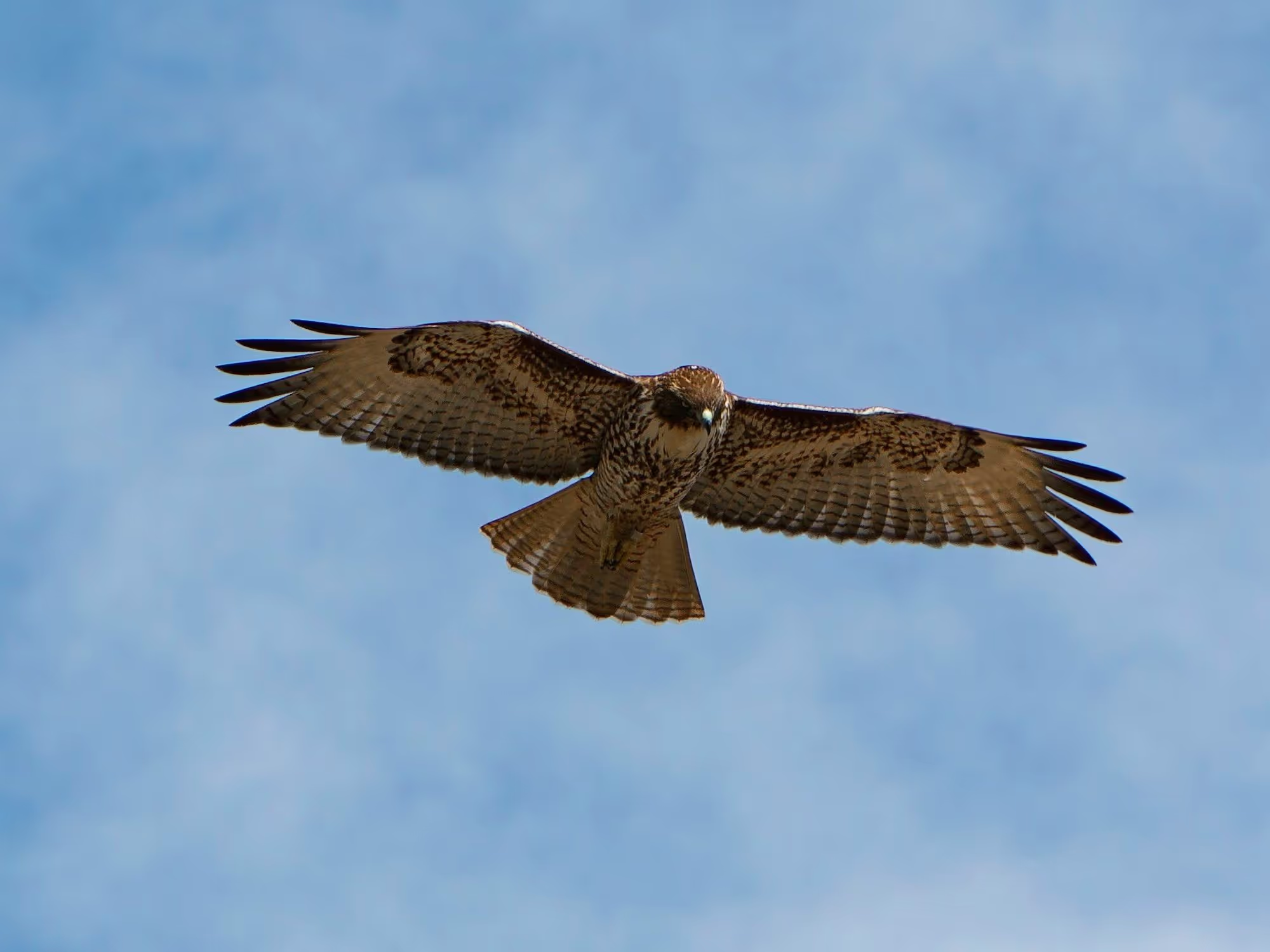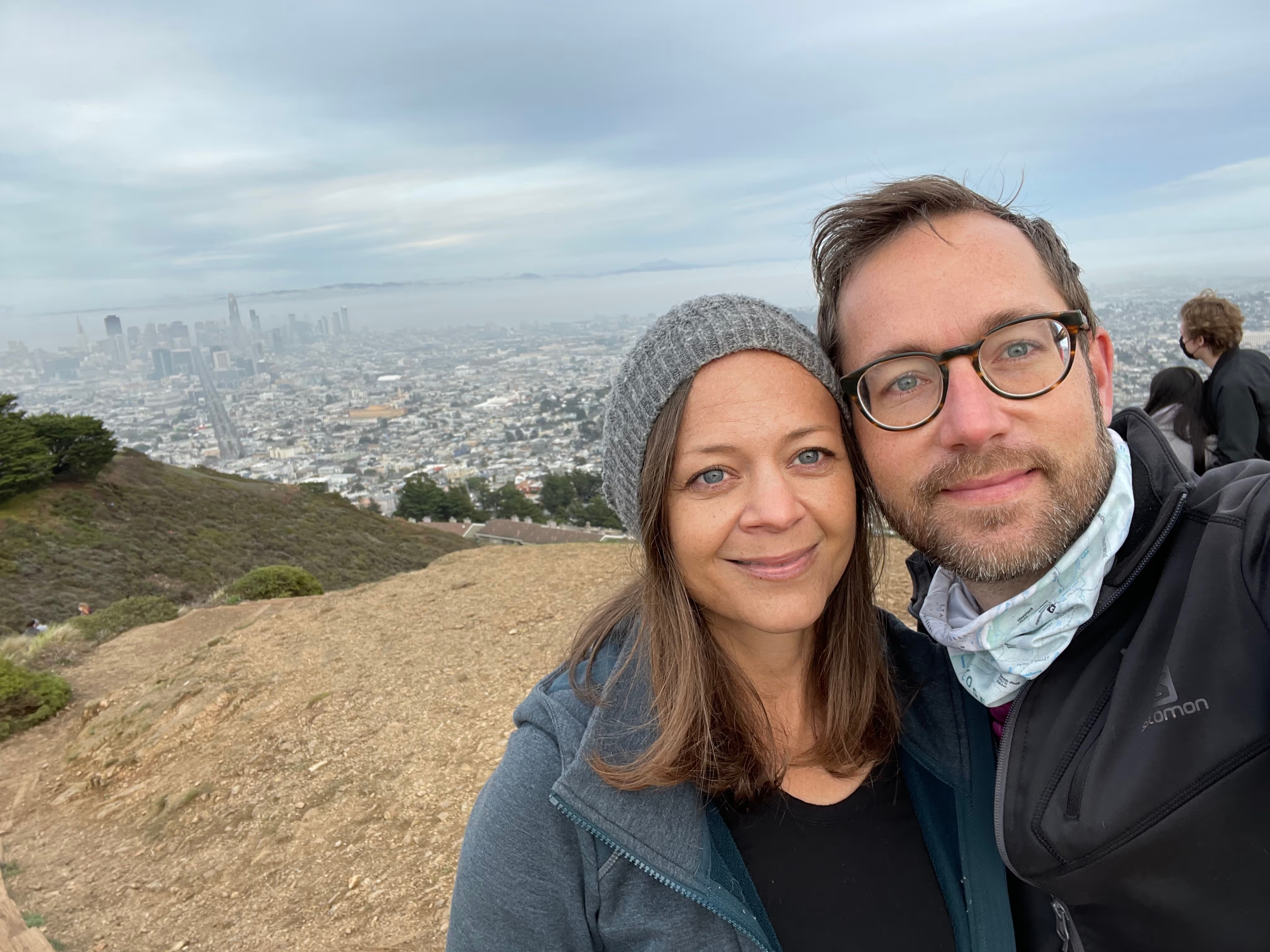To survive here requires grit & tenacity.
But to thrive here? Well, that is another thing altogether.

Early one morning up on Twin Peaks, I spotted a red-tailed hawk. It hovered motionless, riding the wind above me as I slogged along on my run to the peak. It was a beautiful, freeze-frame moment as The City, bridge, and bay spread out before me in the early morning quiet and rare fog-free skyline. I alone moved through this living polaroid of a moment.
And then a realization hit me, like a slap across the face.
Nothing about this moment was still.
Nothing about this hawk was motionless.
A thousand opposing forces fought fiercely against each other—updrafts, downdrafts, tiny muscle-mechanics in the hawk's wings, tail, its entire body quivering, contracting, and extending to stabilize itself. The appearance of graceful stability in this creature was not in fact stillness but an invisible battle fought to a stalemate. Perfect tension.
And in that moment—sweaty, with tired legs and heavy breath—I felt the ground shift beneath my feet. No, dear reader, it was not an earthquake. It was something far more earth-shattering. The shift was my perception of reality.
Up until that moment, my perception of movement, of progress—both in the world around me and the world within me—had been interpreted relative to my surroundings and therefore skewed.

I had been thinking of stability as the lack of movement. Inert. Passive.
A thing that is big enough or strong enough can be stable. A thing that is light or weak cannot.
That perception was now gone, carried out over the San Francisco Bay by the very gusts that fought and lost against the hawk.
This hawk, this 48-ounce creature, shattered my perspective of what stability is and what it is not. Stability could not simply be the lack of movement; it must be an active force. A cultivated skill that is able to endure.
And since my perception of stability is always relative to the movements of the people and world around me, it is difficult to accurately gauge my own stability. Or yours. When we feel unmoored—from our job, our community, our city, or even ourselves—it is due to the relative movement of one or more of those things. Me. You. Our community.
Wherever it comes from, we feel it acutely. The ability to remain stable, like this hawk skillfully riding the wind above Twin Peaks through that turbulence, does not happen passively. It requires intentional effort, training, and focus over time.
This moment, this monumental shift, happened in a blink of an eye, and I soared home with an imagination to cultivate a stability here in San Francisco that is able to ride the wild gusts of life in San Francisco with the same graceful stability of this hawk.
This imagination was the seed of Tillage, just beginning to form.
As Mel and I (Jamin) have lived and worked and raised our family here over more than a decade, we have been anchored by a deep sense that we belong to this City and it to us. And so, making a thousand tiny micro adjustments to find stability, we have sought to find rootedness in the rocky soil of this Place (and yes, I did just switch metaphors. I do that. You’re going to have to get used to it.).
We have actively cultivated our affection for the City—with all its profound beauty and brokenness—seeking its peace, its welfare, its thriving. And as we have done this over the years, our imagination of cultivating stability has expanded.
Tillage is the outworking of this imagination. We’re imagining San Francisco in 100 years and planting the seeds that need to start growing now to make that future possible. We want to create not just a singular place but an ecosystem of thriving right here in San Francisco.
Do you want to learn to be a hawk with us? Or a deep-rooted tree? Choose your fighter, but let’s do it together.
Join The Membership today.
